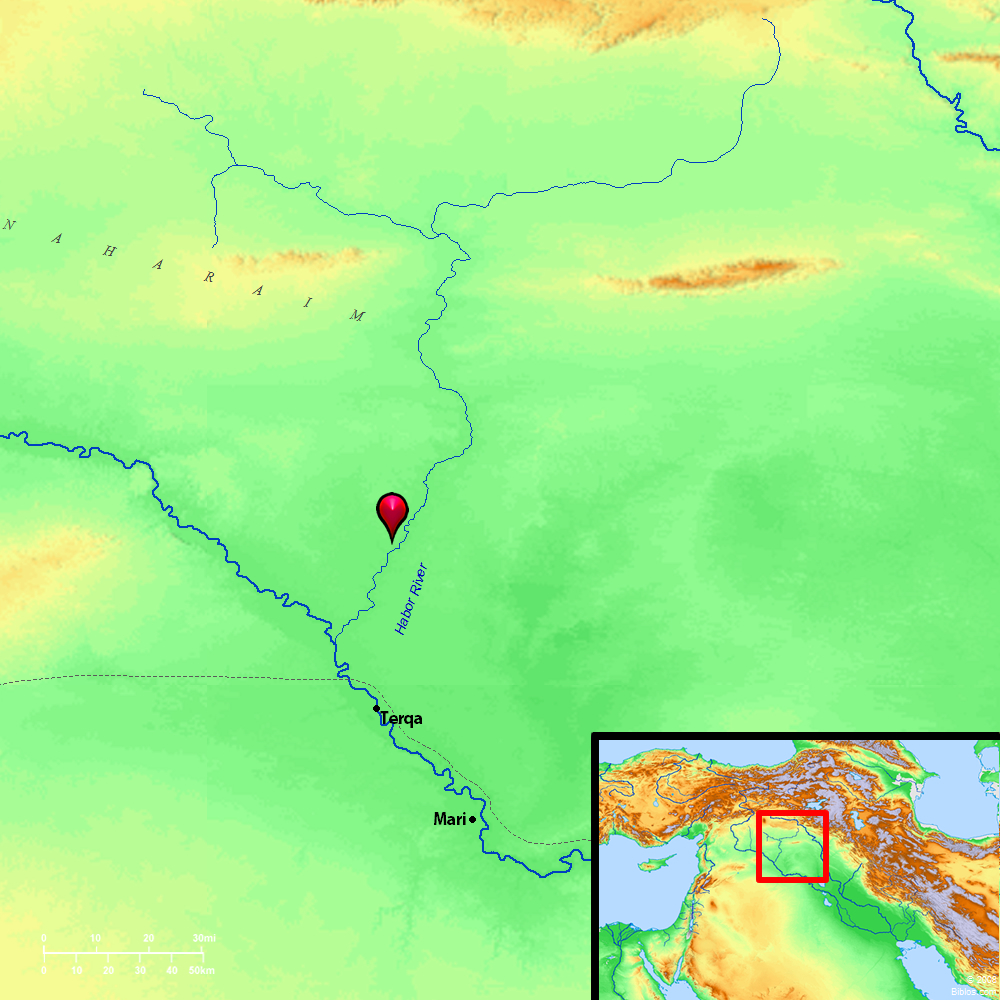Atlas

Habor River and surrounding region
Maps Created using Biblemapper 3.0Additional data from OpenBible.infoOccurrences
2 Kings 17:6 In the ninth year of Hoshea the king of Assyria took Samaria, and carried Israel away to Assyria, and placed them in Halah, and on the Habor, the river of Gozan, and in the cities of the Medes.
2 Kings 18:11 The king of Assyria carried Israel away to Assyria, and put them in Halah, and on the Habor, the river of Gozan, and in the cities of the Medes,
1 Chronicles 5:26 The God of Israel stirred up the spirit of Pul king of Assyria, and the spirit of Tilgath Pilneser king of Assyria, and he carried them away, even the Reubenites, and the Gadites, and the half-tribe of Manasseh, and brought them to Halah, and Habor, and Hara, and to the river of Gozan, to this day.
Encyclopedia
HABORha'-bor (chabhor; Habor, Habior; Isidor of Charax, Aburas (Abouras), Zosias, Aboras):
1. Its Position and Course:
Is described in 2 Kings 17:6; 2 Kings 18:11 (compare 1 Chronicles 5:26) as "the river of Gozan." It is the Arabic Khabur, and flows in a southerly direction from several sources in the mountains of Karaj Dagh (Mons Masius), which, in the 37th parallel, flanks the valley of the Tigris on the West. The river ultimately joins the Euphrates after receiving its chief tributary, the Jaghjagha Su (Mygdonius), at Circesium (Kirkisiyeh).
2. Etymologies of Habor:
The meaning of its name is doubtful, but Delitzsch has suggested a Sumerian etymology, namely, habur, "the fish-waterway," or it may be connected with "mother Hubur' " a descriptive title of Tiamat (see MERODACH; RAHAB).
3. Historical References:
Layard found several interesting Assyrian remains in the district, including man-headed bulls bearing the name of Muses-Ninip, possibly an Assyrian governor. Tiglath-pileser I (circa 1120 B.C.) boasts of having killed 10 mighty elephants in Haran and on the banks of the Habor; and Assur-nacir-apli (circa 880 B.C.), after conquering Harsit (Harrit, Harmis), subjugated the tract around piate sa nar Habur, "the mouths of the Habor." According to 2 Kings and 1 Chronicles, Shalmaneser IV and Sargon transported the exiled Israelites thither. Philological considerations exclude the identification of the Chebar of Ezekiel 13, etc., with the Habor.
T. G. Pinches
HA'BOR, see Gozan, 1 Chron. 5:26, this means, probably "the river of Gozan".
Strong's Hebrew
H2249: Chabora river of Assyr.




